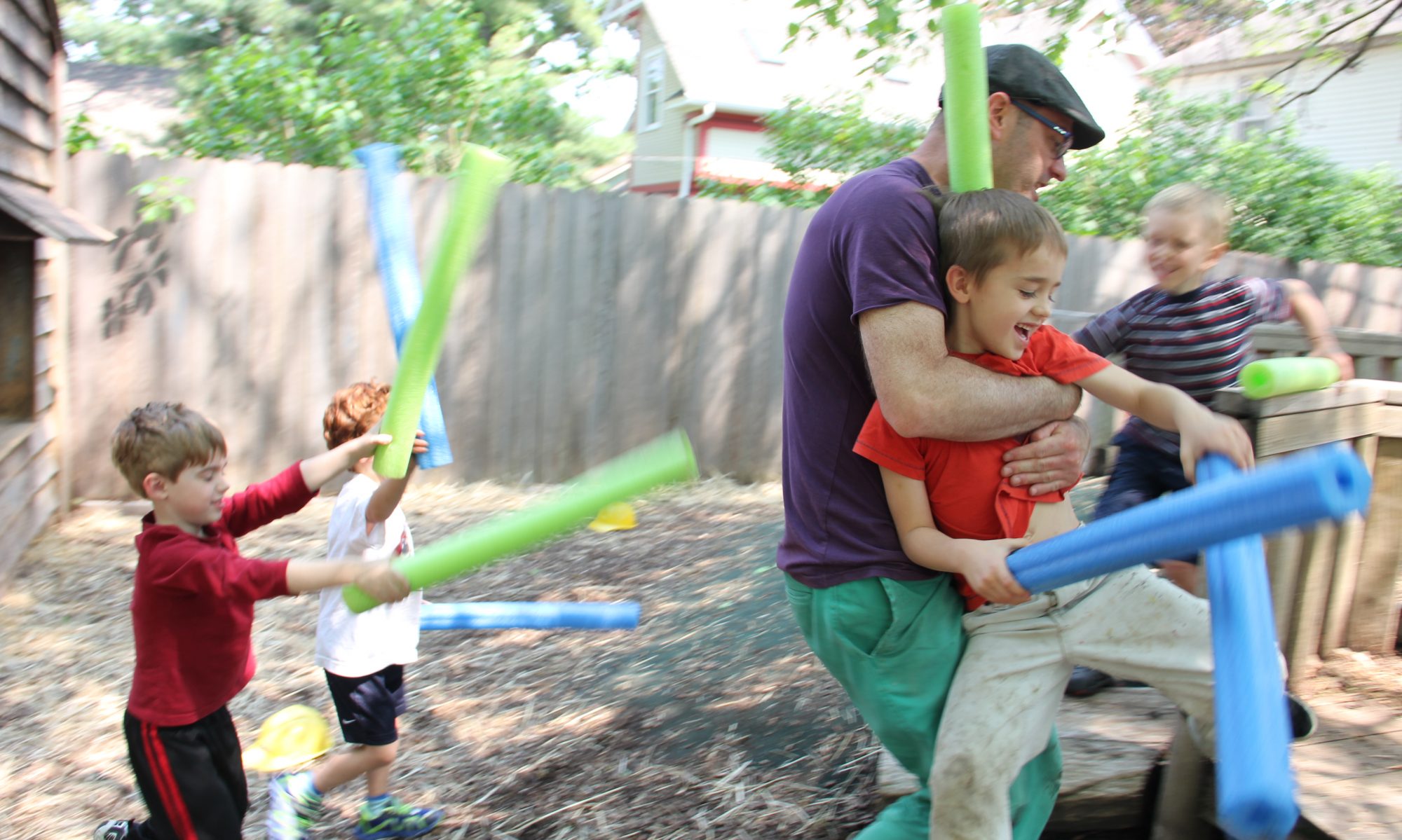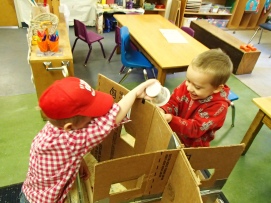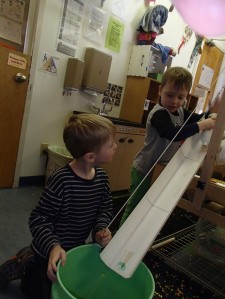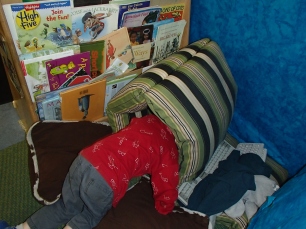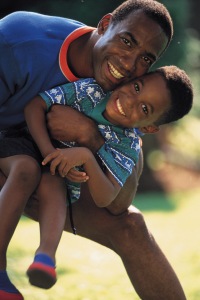Teachers of young children often use the phrase “use your words.” It usually refers to the idea of using words to express dissatisfaction with another child rather than hitting them. I also used to use the phrase to remind children to ask before joining in play, but I have had to rethink that.
The problem is that most communication comes from nonverbal gestures. There are a lot of other skills besides using words that are needed to join others in play. For example, Greg and Neville are very close friends. They play together every day, often roughhousing. However, they do not start by asking if they can play rough. They have an understanding built on trust.
Here is a typical day in my classroom:
Neville crashed into Greg. I take a few steps forward. Like a police officer, I am assessing the situation as I approach. Is anyone hurt? Is a fight about to erupt? Did a fight already in progress? Do I need to call for back up? Neville looks up at Greg (he is a full head shorter). Neville is smiling. Greg meets Neville’s eyes, and he smiles, too. Then Greg tackles Neville to the couch. They erupt into laughter. I look around to see if the area they have chosen is safe for this type of play. They wisely chose the couch. I know that in a few minutes, Neville will cry. It almost always happens that he will get bumped a little too hard. Greg will stop the play and ask if Neville is OK. Neville will cry for about thirty  seconds and Greg will apologize. Then Neville will look at Greg’s face and smile. Greg immediately goes into play mode. The two are tackling each other.
seconds and Greg will apologize. Then Neville will look at Greg’s face and smile. Greg immediately goes into play mode. The two are tackling each other.
It always starts with non-verbal communication. The two know that they are playing. They often tackle each other once or twice before they even talk about what they are playing. After the initial greeting-tackle, one of them will suggest a scenario.
“How about we’re superheroes?” “How about we’re Ninja Turtle?” “How about we’re lions that escaped from the zoo?”
Then play resumes. It is a mixture of verbal and non-verbal communication. If someone winces, the other often eases up. If someone starts laughing, the other will keep repeating the action that led to laughter. Sometimes they don’t even bother with a scenario. They simply enjoy the physical contact.
Greg and Neville have an existing relationship that allows them to not use their words. What about a third child? Greg and Neville often are joined by others who read the body language. If the two of them are rolling on top of each other, another child might also roll on top of one of them. Usually it works. Once in a while someone will say “stop.” The other child stops and trust is built.
If a new child joined our class, I would have to help them join other children who were playing. I find that the most successful way of joining others is not to ask, “Can I play, too?” The first step is non-verbal. The child needs to play with similar materials. If a child is drawing, draw near them. If they are building with blocks, build near them. They also have to position themselves in the same way as the child they want to play with. If the child is sitting on the floor, the other child should sit on the floor. If the child is sitting at a table, the child sits at the table. If the play involves movement, the child entering play needs to move as well.
If pretend play is involved, the child should figure out the roles and choose a role to suggest. When they do finally speak, they need to use a tone of voice that is not too forceful or even a polite request will go unheeded. Even if the other children don’t agree with the role chosen, they will often choose a substitute. “You can’t be the Mom because we don’t have any parents. You can be the big sister.”
Children do need to use their words, but they need to express themselves with their actions as well.
